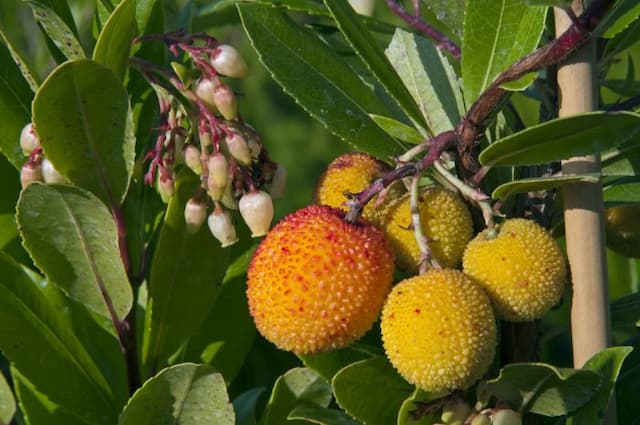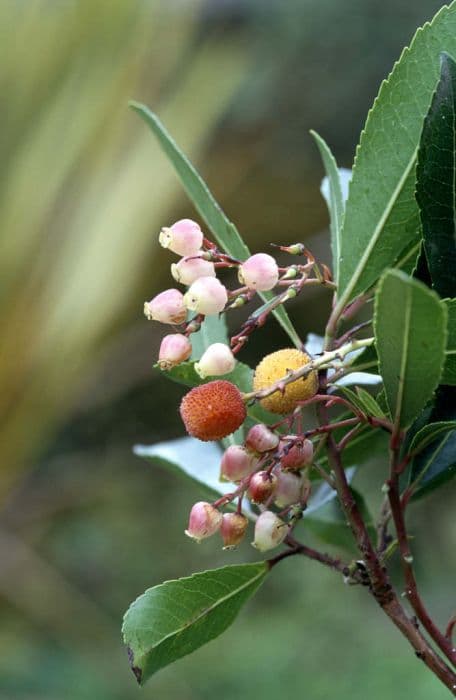Rhododendron 'Arctic Tern' Rhododendron 'Arctic Tern'

ABOUT
'Arctic Tern' is a vigorous small evergreen shrub of open, erect growth, with narrow glossy green leaves, to 3.5cm long, and compact clusters of green-throated white flowers, 1cm wide, opening from late spring
About this plant
 Names
NamesFamily
Ericaceae
Synonyms
Arctic Tern Rhododendron
Common names
Rhododendron 'Arctic Tern'.
 Characteristics
CharacteristicsLife cycle
Perennials
Foliage type
Evergreen
Color of leaves
Green
Flower color
White
Height
2 feet (0.61 meters)
Spread
2 feet (0.61 meters)
Plant type
Shrub
Hardiness zones
5
Native area
Asia
Benefits
 General Benefits
General Benefits- Attracts Pollinators: Rhododendrons are known to attract bees, butterflies, and other beneficial insects that help in the pollination process.
- Low Maintenance: Rhododendron 'Arctic Tern' is relatively easy to take care of, requiring minimal pruning and can thrive in a variety of climates.
- Landscape Aesthetics: With its beautiful white flowers and lush green foliage, this plant can enhance the visual appeal of any garden or landscape design.
- Tolerates Shade: Rhododendron 'Arctic Tern' is suitable for gardens with partial shade, opening up planting possibilities in less sunny areas.
- Year-Round Interest: Despite blooming primarily in the spring, Rhododendron 'Arctic Tern' offers year-round interest due to its evergreen leaves.
- Erosion Control: The plant's root system can help to minimize soil erosion in sloped areas of a landscape.
- Resilience to Cold: As implied by the name 'Arctic Tern', this rhododendron variety is capable of withstanding colder temperatures, making it suitable for northern gardens.
- Variety of Uses: They can be planted as specimen plants, in foundation plantings, or even in mass plantings for greater visual impact.
 Medical Properties
Medical PropertiesThis plant is not used for medical purposes.
 Air-purifying Qualities
Air-purifying QualitiesThis plant is not specifically known for air purifying qualities.
 Other Uses
Other Uses- Artistic inspiration: Rhododendron artists may use the 'Arctic Tern' as a subject for painting, drawing, or photography, captivated by its unique beauty and form.
- Floral arrangements: Its blossoms can be incorporated into cut flower arrangements, adding a splash of color and a delicate structure to the composition.
- Garden design theme: The plant can be used to create a 'white garden', where various plants with white flowers and foliage are grouped together to create a monochrome landscape.
- Educational tool: Botany educators can use the 'Arctic Tern' to teach about plant adaptation to cold climates and the importance of winter hardiness in horticulture.
- Natural dye: The petals could potentially be used to create a light pink or cream natural dye for fabrics, though this is not a common practice.
- Symbolism and gifts: Given its pristine white flowers, the 'Arctic Tern' may be used symbolically in ceremonies or as gifts representing purity and elegance.
- Photoperiodism studies: Scientists may study the 'Arctic Tern' to understand how flowering plants respond to the length of day and night, as Rhododendrons are known to be sensitive to photoperiod changes.
- Bonsai: Some horticulturists may choose to cultivate the 'Arctic Tern' as a bonsai plant, enjoying the challenge of miniaturizing this rhododendron species.
- Habitat creation: When planted in gardens, the 'Arctic Tern' can provide habitat and shelter for small wildlife, such as birds and beneficial insects.
- Seasonal celebrations: This rhododendron's white flowers can complement winter-themed decorations, especially in celebrations and festivals that occur during the colder months.
Interesting Facts
 Feng Shui
Feng ShuiThe Rhododendron is not used in Feng Shui practice.
 Zodiac Sign Compitability
Zodiac Sign CompitabilityThe Rhododendron is not used in astrology practice.
 Plant Symbolism
Plant Symbolism- Beware: Rhododendrons often symbolize caution due to their toxic nature, signifying the need to be wary of potential dangers.
- Rejuvenation: The spring bloom of rhododendrons represents renewal and the beginning of a new cycle.
- Abundance: With their lush, full blooms, rhododendrons can symbolize abundance and wealth.
- Elegance: The beauty and grace of rhododendrons are often linked to elegance and sophistication.
- Homecoming: In some cultures, rhododendrons are seen as a symbol of returning home or coming back to one's roots.
 Water
WaterThe Rhododendron 'Arctic Tern', commonly known as Rhododendron, requires consistent moisture and should be watered once a week with about 1 inch of water. During hot or dry periods, the frequency should increase to ensure the soil remains evenly moist but not waterlogged. It's important to avoid overhead watering to prevent disease; instead, water at the base of the plant. Established plants may require less frequent watering, but it's crucial to adjust according to the weather and the plant's stress signs such as drooping leaves.
 Light
LightRhododendrons, including the 'Arctic Tern', prefer bright, indirect light or partial shade. They thrive under the dappled sunlight of tall trees, which mimics their natural habitat in the understory of forests. Direct afternoon sun can be too intense and may harm the plant, so it's best positioned in a spot that avoids the hot midday sun.
 Temperature
TemperatureThe ideal temperature range for the Rhododendron 'Arctic Tern' is between 60°F and 75°F. Rhododendrons can generally tolerate temperatures as low as 20°F before they start to experience cold damage. Protect them from strong winter winds by planting in a sheltered location, and consider the use of mulch to insulate the roots in colder climates.
 Pruning
PruningPruning Rhododendrons like 'Arctic Tern' is typically done for shaping, removing dead or diseased wood, and promoting vigorous growth. The best time to prune is just after the plant has finished blooming in spring to avoid cutting off next year's buds. Light pruning and removing spent flower clusters can be done annually, while more extensive pruning should be done every few years as needed.
 Cleaning
CleaningAs needed
 Soil
SoilRhododendrons require acidic soil with a pH of 4.5 to 5.5. The best soil mix for a Rhododendron 'Arctic Tern' or any rhododendron is a blend of 50% pine bark, 30% peat moss, and 20% perlite to ensure good drainage and aeration. Adding organic matter can also help maintain the necessary acidity levels.
 Repotting
RepottingRhododendron 'Arctic Tern' should be repotted when it outgrows its current container, which is generally every 2 to 3 years. It's best to repot in late winter or early spring before new growth begins, using a soil mix designed for acid-loving plants.
 Humidity & Misting
Humidity & MistingRhododendron 'Arctic Tern' thrives in environments with high humidity levels, ideally between 40% and 60%. These plants benefit from being placed in a naturally humid environment or having humidity increased with a humidifier or pebble tray with water.
 Suitable locations
Suitable locationsIndoor
Place in bright, indirect light with acidic soil and ensure high humidity.
Outdoor
Partial shade, acidic soil, protect from wind, mulch root area.
Hardiness zone
5-8 USDA
 Life cycle
Life cycleThe life of Rhododendron 'Arctic Tern,' commonly known as the Arctic Tern Rhododendron, starts with seed germination, where the plant begins as a seed planted in well-drained, acidic soil in a shaded area. After germination, the seedling emerges and goes through vegetative growth, developing leaves and establishing a strong root system. As it matures, the Arctic Tern Rhododendron enters a phase of reproductive growth, where buds form and eventually bloom into distinctive white flowers with yellow markings, usually in late spring. Following pollination, which is aided by insects, the flowers develop into seed pods that, once matured, release seeds to propagate the next generation. The plant experiences a period of dormancy in colder climates during winter, where growth slows significantly until conditions become favorable again in spring. The Arctic Tern Rhododendron can live for many years, continuing its cycle of growth, flowering, and dormancy, often enjoying peak blooming for several weeks each season.
 Propogation
PropogationPropogation time
Spring-Early Summer
The Rhododendron, particularly the 'Arctic Tern' variety, is commonly propagated through semi-hardwood cuttings. This method is typically carried out in the late summer after the new growth has begun to mature and harden slightly. To propagate by cuttings, a healthy, disease-free shoot is selected and a cutting of about 4 to 6 inches (approximately 10 to 15 cm) in length is taken. The bottom leaves are removed and the cut end is often treated with a rooting hormone to enhance root development. The cutting is then placed in a well-draining potting mix, and kept under high humidity and indirect light until roots have developed, a process that can take several weeks to a few months. During this time, the cutting must be kept moist but not waterlogged to prevent rot. This method is favored for preserving the genetic characteristics of the parent plant.









